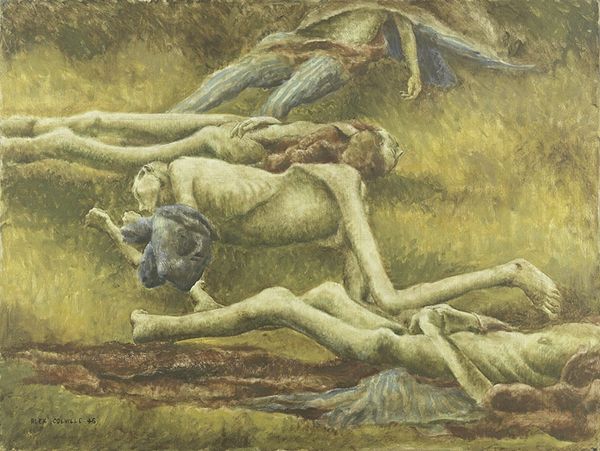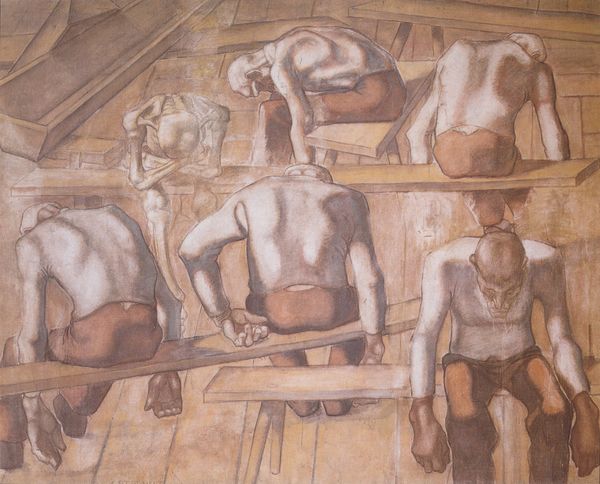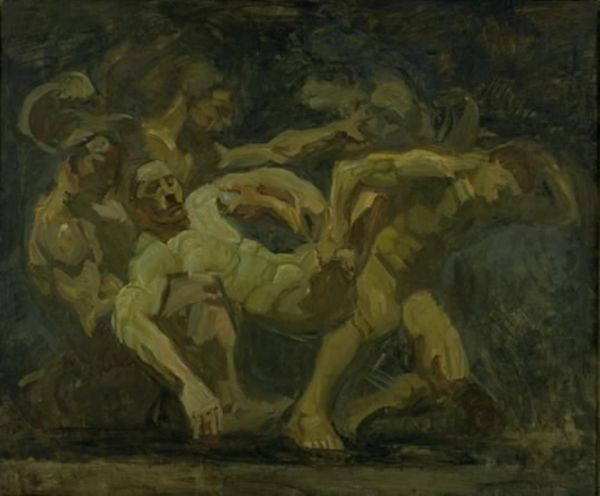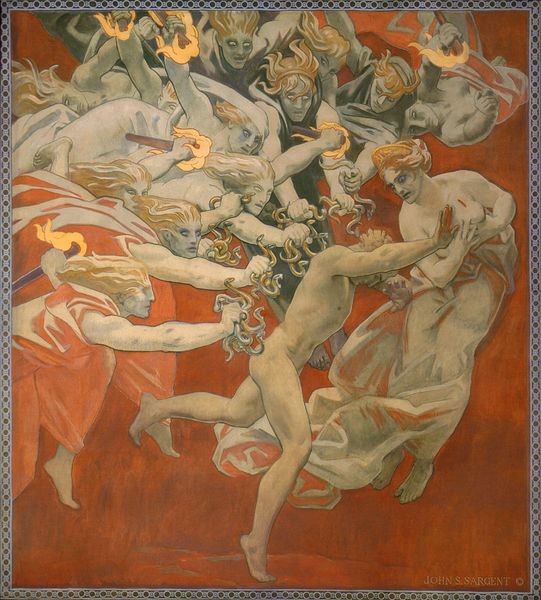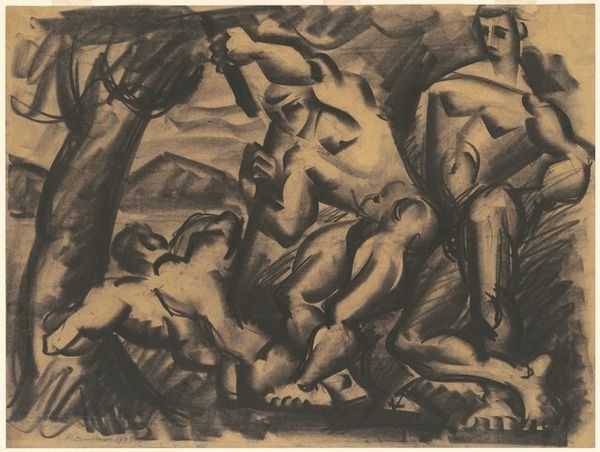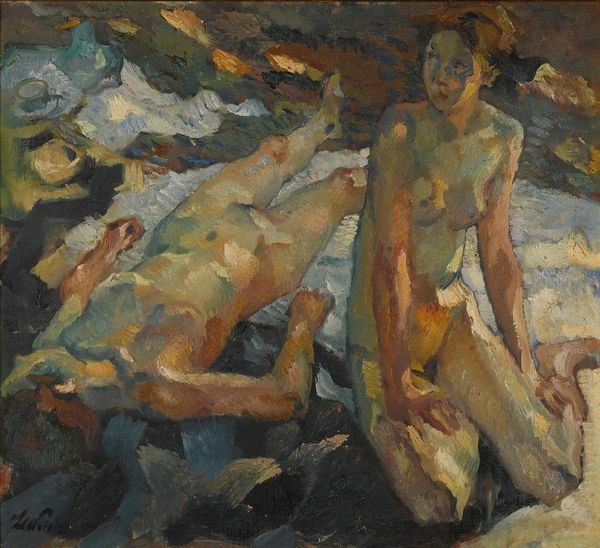
#
abstract painting
#
charcoal drawing
#
possibly oil pastel
#
charcoal art
#
oil painting
#
acrylic on canvas
#
underpainting
#
painterly
#
mythology
#
painting painterly
#
watercolor
Dimensions: 227 x 140 cm
Copyright: Public domain
Curator: Looking at Albin Egger-Lienz's painting from 1918 entitled "Finale," I am struck by the somber, monumental depiction of loss. Editor: Yes, the ochre tones immediately give it a feeling of decay, like aged bronze, but heavier, more organic. What materials did Egger-Lienz use here? Curator: We believe the work involves oil paint. But what draws the eye is certainly the composition—the interlocked bodies arranged almost as a single, sprawling form. It resembles less a realistic portrayal of deceased soldiers and more a kind of allegorical landscape. The planes of flesh and the implied violence of their positioning point toward a greater sense of suffering beyond the individual. Editor: Right, one can't help but think about the environment in which this was made, towards the close of the First World War. Materials would have been scarce, maybe dictating this very limited palette? You almost sense a kind of raw earthiness that transcends its subjects; their bodies become material almost mined from the battlefields themselves. It certainly makes you think about the social realities of artistic creation under duress. Curator: I agree; although I see more classical influences, it does capture a raw and almost timeless scene of fallen heroes; like a kind of brutal frieze depicting a collapse. Notice also that although it renders each body quite accurately, its meaning arrives from how it distorts the individual into part of something monolithic. It moves past any one person's death into something more like mass trauma. Editor: Exactly. And how many individuals had access to oil paints in 1918 given its relative cost and military needs during the time? In my reading, its earthy rendering creates a crucial context regarding what it was possible to represent, considering constraints during wartime production and cultural memory. It certainly complicates the supposed detachment between art, material conditions, and trauma. Curator: It seems as if the artist uses the tools that are to hand to portray trauma by melding forms together; in a final composition the forms convey an absolute dissolution in a tragic conclusion. Editor: Yes. Seeing "Finale" really emphasizes the social, almost brutal circumstances behind this visual record. Thanks to our talk, I better appreciate how material informs and complicates this representation of tragedy.
Comments
No comments
Be the first to comment and join the conversation on the ultimate creative platform.

